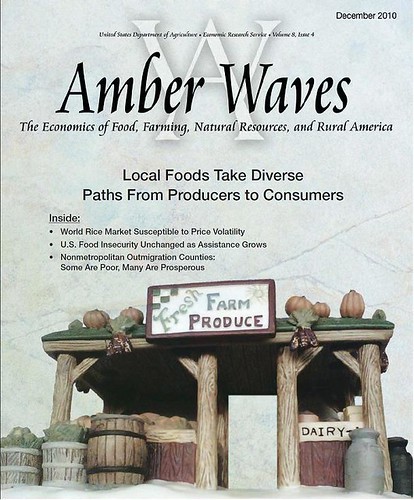
Most people who are interested in local food know that farmers markets and Community Supported Agriculture (CSA) are great ways to buy products from local farms and vendors. But are there other ways that local food moves from producers to consumers? It turns out that a great variety of food supply chains are capable of delivering locally produced foods to consumers. Studying these supply chains offers an interesting peek into the future of local foods in the United States.
Amber Waves is the quarterly magazine of the USDA’s Economic Research Service, and our December 2010 issue includes a feature article describing recent research on local food supply chains. Researchers sponsored by ERS studied several food supply chains around the country, looking at how the size, structure, and performance of local supply chains compare to mainstream supply chains. They compared blueberries in Oregon, leafy greens in Sacramento, and beef in Minneapolis-St. Paul, among other products and locations.
We found that how the supply chain is structured – that is, the number and types of relationships between people in the supply chain – makes a big difference in the information people get about the origin of their food, the amount of fuel used in transportation, and the prices that farmers receive for their product. For example, sometimes locally produced foods are less expensive than products in mainstream supply chains, while in other cases they are more expensive. It appears that the size and structure of food supply chains, along with product characteristics and market factors, may help explain these differences. We hope this report is useful to farms and businesses who may want to enter local food supply chains, and to organizations making decisions about local foods programs in their area.
While you’re learning about local food supply chains, make sure you also check out an article in the same issue of Amber Waves on the growth of local foods in the United States. The article describes recent research on what’s driving interest in local foods, and what growth means for consumers, farmers, and businesses.
